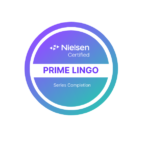Google Ads announced that effective June 30, 2022, adding or editing standard expanded text listings in the platform will no longer be available. Responsive search ads will be the only search ad type allowed for search campaigns.
What is a responsive search ad?
Responsive search ads allow you to create an ad that adapts to show more text and more relevant messages to your customers.
Within the Google Ads platform, advertisers provide multiple headlines and descriptions. Google Ads automatically tests different combinations and learns which combinations perform best.
What will the consumer see?
In the Google search results, the text listing (ad) will look the same to the user.
What does this mean to you, the advertiser?
Flexibility. With up to 15 headlines and up to 4 descriptions in rotation, responsive search ads allow more options to test assets to determine which perform best.
How do you evaluate the success of responsive search ads?
With this new format, you can no longer evaluate text listings based on click rate, conversions, or revenue. However, you are also able to see the impressions served by headline and description. If you have 5,000 impressions per ad within 30 days, Google will also show which assets are performing Best, Good or Low. With this data, your headlines and descriptions can be updated based on your performance data.
We have been running a combination of responsive search ads and standard expanded text listings for our clients for the past 3 years. In most cases, we find the responsive search ads are served more often, has a higher click rate and lower cost per click compared to the standard expanded text listings.
We agree with the flexibility this format offers. With standard expanded text listings, you need to run multiple variations to determine which headline or description isn’t resonating as well as others. Is it the headline or description? Is it headline 1 or headline 2? And so on. With responsive search ads, we can easily evaluate headline by headline or description by description and make necessary adjustments.
The downside to the responsive search ads is the lack of control over the ads. Google uses your headlines and descriptions to create a variety of text listings; therefore, you are not able to see the final copy combinations before it’s served.

















